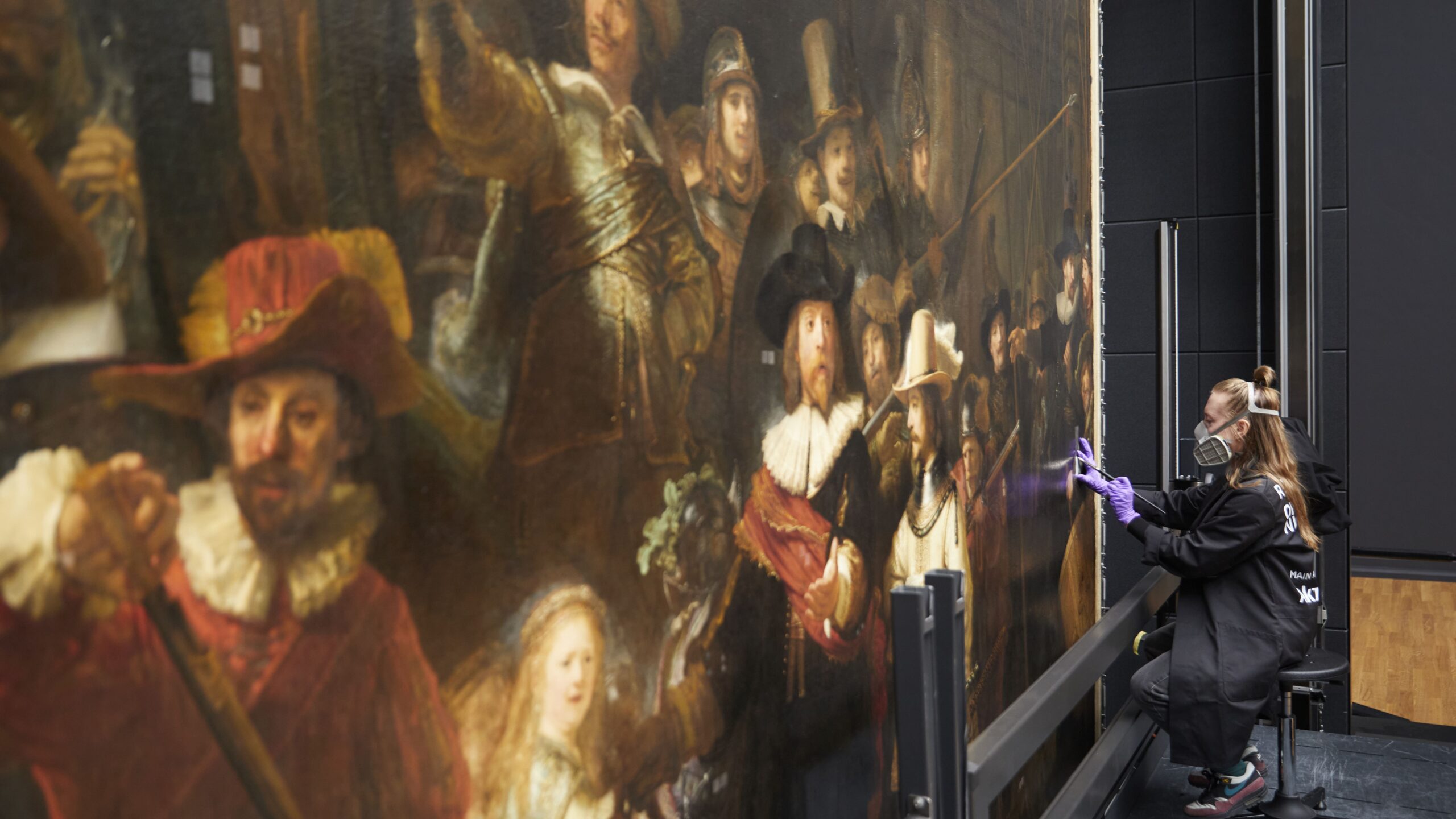Science
New Findings Reveal Dog in Rembrandt’s ‘The Night Watch’ Inspired by Book Illustration

A recent study has unveiled that the dog featured in Rembrandt van Rijn’s renowned painting, “The Night Watch,” may have been inspired by an illustration from a book widely available during the 17th century. This research points to the title page of a work on human temptations, created by the Dutch artist and poet Adriaen van de Venne.
As the restoration of “The Night Watch” continues at the Rijksmuseum in Amsterdam, curator of 17th-century Dutch paintings, Anne Lenders, made a striking connection during her visit to an exhibition focused on Van de Venne at the Zeeuws Museum in Middelburg, the Netherlands. She noted, “As soon as I saw that dog, ‘The Night Watch’ dog came into my mind — I recognized it by the turn of the head.”
Using advanced techniques such as macro X-ray fluorescence scans, researchers conducted a thorough investigation of the underdrawing of “The Night Watch.” This analysis revealed significant similarities between the two dogs, leading to a deeper understanding of Rembrandt’s artistic process. In the final version of the painting, Rembrandt depicted his dog on all fours, complete with a tongue to emphasize its barking at a massive drum. Lenders commented on Rembrandt’s clever adjustments, stating, “It’s very clever how Rembrandt adjusted his dog, putting it in an active stance, vigilant and alert.”
The dog serves to enhance the painting’s dynamic quality, making it seem as though something could occur at any moment. Its presence adds to the overall liveliness of this iconic work. Lenders further pointed out Rembrandt’s familiarity with Van de Venne’s prints, indicating that the artist had a substantial collection of them.
In addition to the dog’s likeness, the study suggests that another figure in the same illustration bears a resemblance to elements in Rembrandt’s 1655 painting, “Joseph Accused by Potiphar’s Wife,” which is part of the collection at the Gemäldegalerie in Berlin. This connection highlights the intertextual nature of Rembrandt’s work and his engagement with the art of his time.
Taco Dibbits, director of the Rijksmuseum, elaborated on the significance of such artistic borrowing during Rembrandt’s era. He noted that what might be termed “copying” today was often a crucial part of an artist’s training and a demonstration of their scholarly depth. “He didn’t want people to call him Rembrandt van Rijn, but just Rembrandt, like Michelangelo,” Dibbits explained. “He really wanted, just like the Italians, to be that learned artist who based himself on prints from his predecessors, who could copy so incredibly well and know them so intimately that he developed them further.”
The research not only sheds light on the connections between different artworks but also enhances the understanding of Rembrandt’s creative methods. As the restoration of “The Night Watch” progresses, these revelations contribute to the ongoing appreciation of one of the most significant pieces of art in history.
-

 Technology5 months ago
Technology5 months agoDiscover the Top 10 Calorie Counting Apps of 2025
-

 Health2 months ago
Health2 months agoBella Hadid Shares Health Update After Treatment for Lyme Disease
-

 Health3 months ago
Health3 months agoErin Bates Shares Recovery Update Following Sepsis Complications
-

 Technology4 months ago
Technology4 months agoDiscover How to Reverse Image Search Using ChatGPT Effortlessly
-

 Technology1 month ago
Technology1 month agoDiscover 2025’s Top GPUs for Exceptional 4K Gaming Performance
-

 Technology2 months ago
Technology2 months agoElectric Moto Influencer Surronster Arrested in Tijuana
-

 Technology5 months ago
Technology5 months agoMeta Initiates $60B AI Data Center Expansion, Starting in Ohio
-

 Technology5 months ago
Technology5 months agoRecovering a Suspended TikTok Account: A Step-by-Step Guide
-

 Health4 months ago
Health4 months agoTested: Rab Firewall Mountain Jacket Survives Harsh Conditions
-

 Lifestyle5 months ago
Lifestyle5 months agoBelton Family Reunites After Daughter Survives Hill Country Floods
-

 Technology4 months ago
Technology4 months agoHarmonic Launches AI Chatbot App to Transform Mathematical Reasoning
-

 Technology3 months ago
Technology3 months agoUncovering the Top Five Most Challenging Motorcycles to Ride





















